In 2006, the FIDM Museum received a large donation of garments and accessories spanning almost 100 years of fashion history. With garments dating from about 1850 to the late 1940s, the objects in this donation provide a window into the evolution of fashionable dress during this period of dramatic change. Moreover, the garments and accessories provide a glimpse into the history of a particular family, as all of the items in the donation were worn by ancestors of the donors. The donor family has roots in the mid-west, with specific connections to St. Louis and Indianapolis. The Indianapolis connection is clearly demonstrated by the interior label inside the skirt of this day ensemble, which reads, “Boyd & Jones, Indianapolis, Ind”.
1894-1895
Gift of the Manlove Family
2006.870.19AB
Though it appears to be a one-piece dress, this silk taffeta day-dress actually consists of a separate bodice and skirt. Taffeta was popular during the 1890s, perhaps because its natural stiffness lent itself well to the angularity of the fashionable day silhouette. As is typical of 1890s day-dresses, visual interest is focused on the bodice. The puffed sleeves, contrasting taffeta textiles and matching buttons provide a slight counterbalance to the overall severity of the silhouette. Masculine dress is referenced by the false lapels of the bodice, which mimic the look of a man’s waistcoat and shirt. The tall, straight collar was considered “correct” for day-dresses of the 1890s.
Bodice bows were common during the mid-1890s and were placed almost anywhere. Placement was usually symmetrical, with a bow at each elbow, both shoulders, or at each side of the neck. This FIDM Museum bodice features bows only on the reverse. A self-fabric 5-loop bow at the neck and a 4-loop bow at the waist can only been seen when looking at the ensemble from the back.
 2006.870.19AB Back view of bodice
2006.870.19AB Back view of bodice
As you can seen from the image above, the skirt fullness is concentrated at the back. The front of the 5-gore skirt is a smooth expanse of fabric with no pleats or gathers. To keep the heavier back portion of the skirt from sagging below the bodice waistband, hook and eye fasteners were used to attach the skirt and bodice. A floral taffeta belt conceals the waistband.
Topping off this ensemble is a matching hat embellished with sunflowers and an upright bow made of the same floral print taffeta seen in the bodice. This hat would have been worn flat on the head, over hair swept back into a bun or knot. It probably would have been tilted very slightly forward. Smallish hats with an upright bow or wired embellishment were popular during the mid-1890s. When worn, these hats looked almost like birds perched on a nest, earning them the nickname “setting hens.”1
1 Severa, Joan. Dressed for the Photographer: Ordinary Americans and Fashion, 1840-1900. Ohio: Kent State Press, 1995: 470.

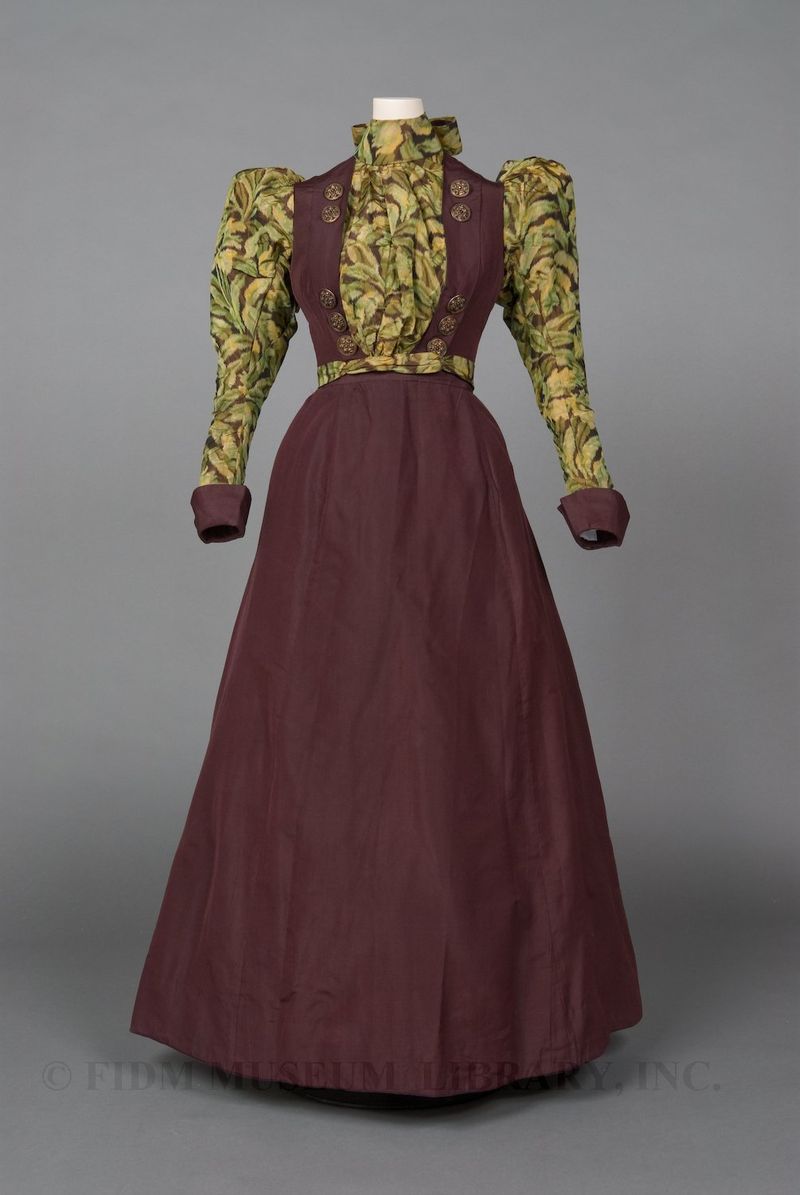
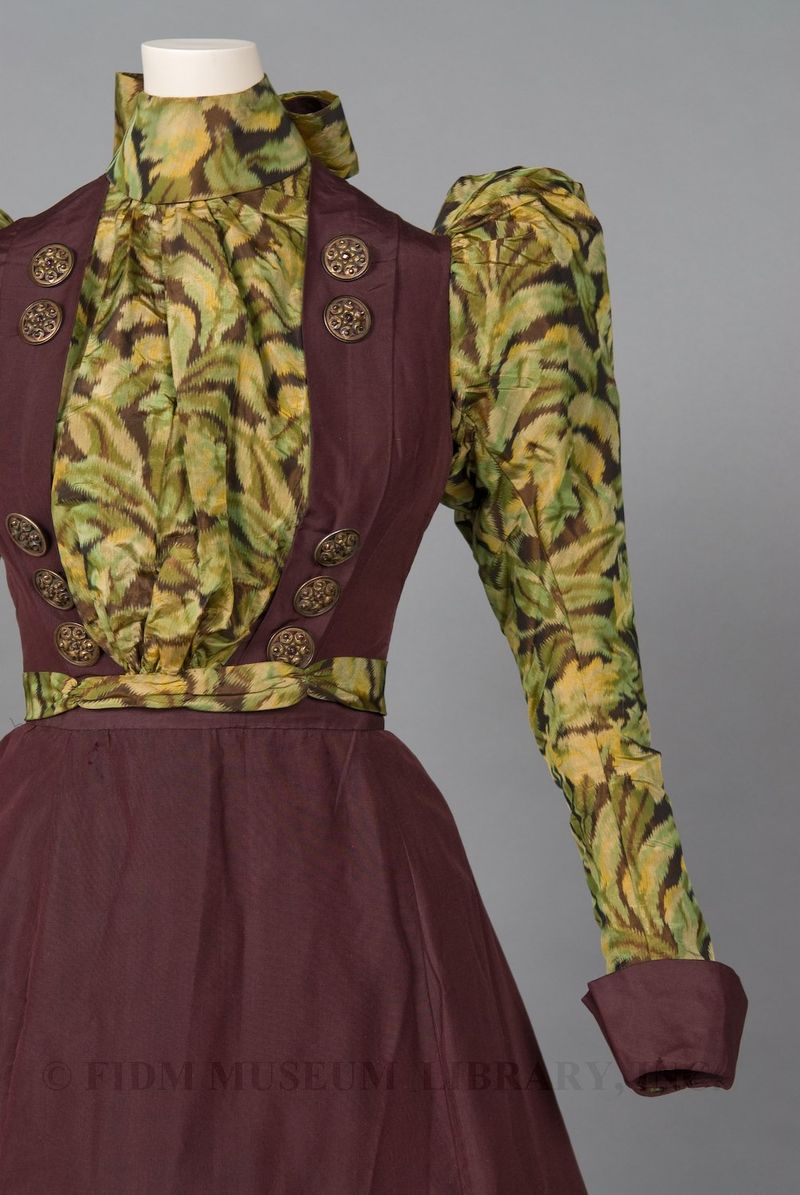
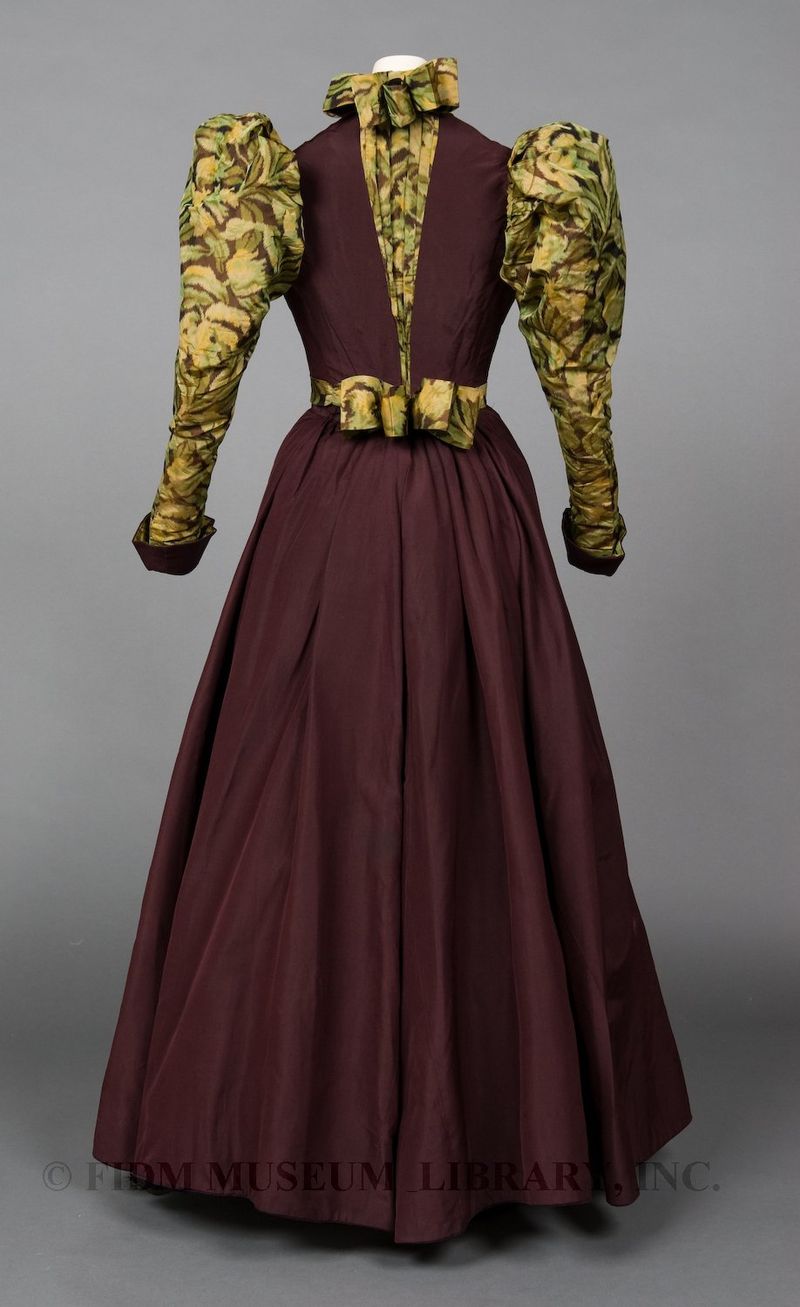
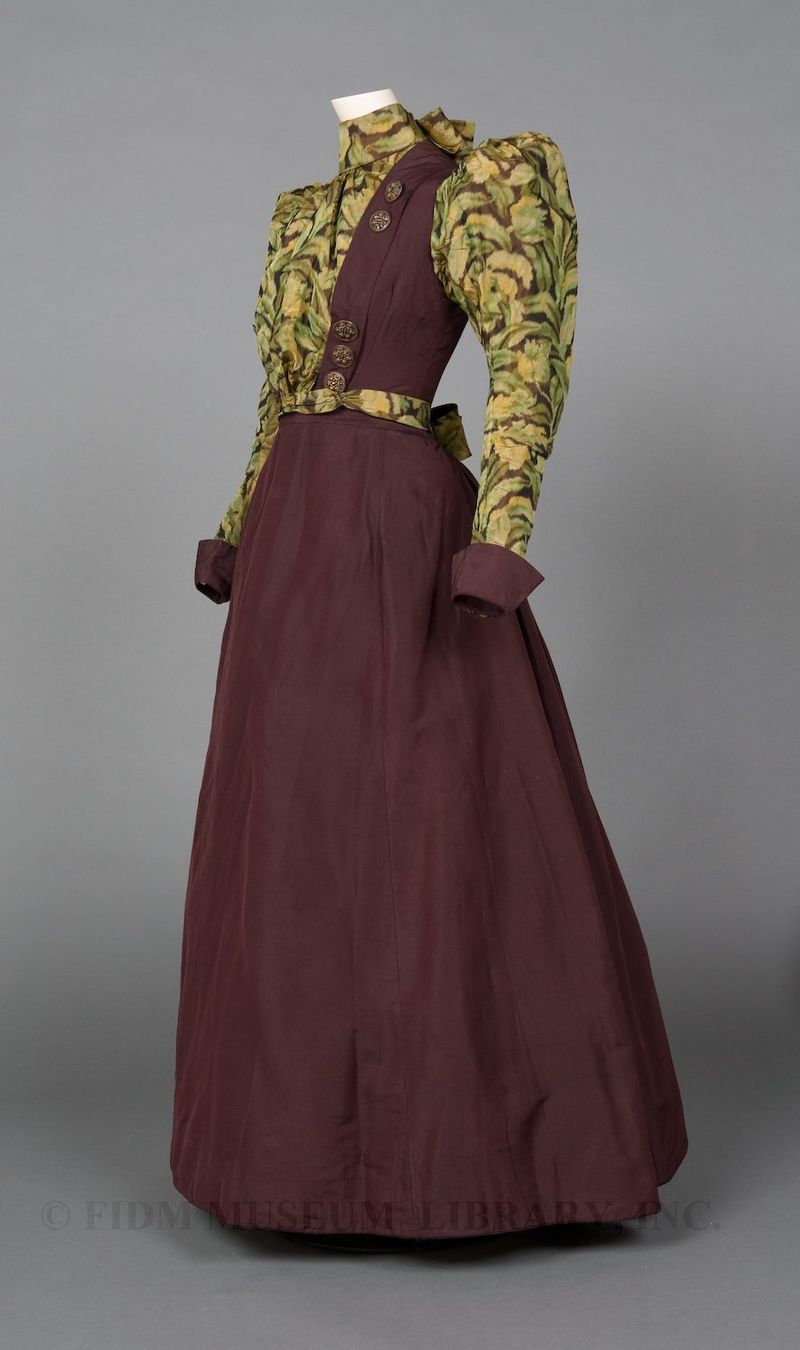
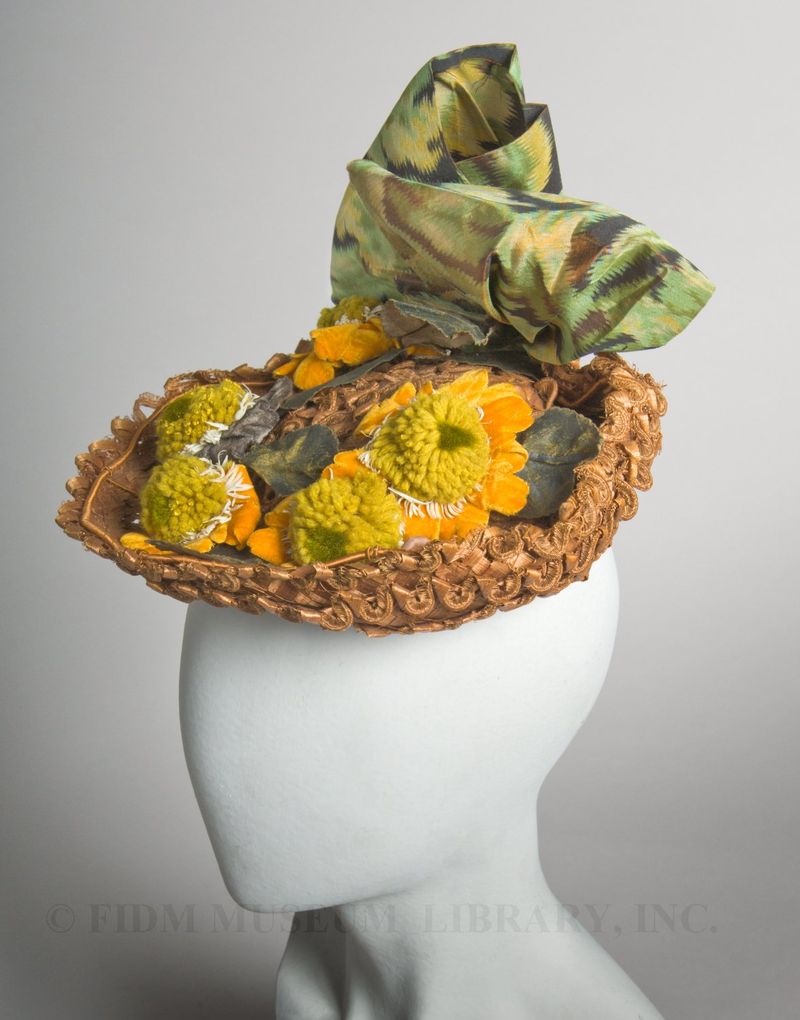
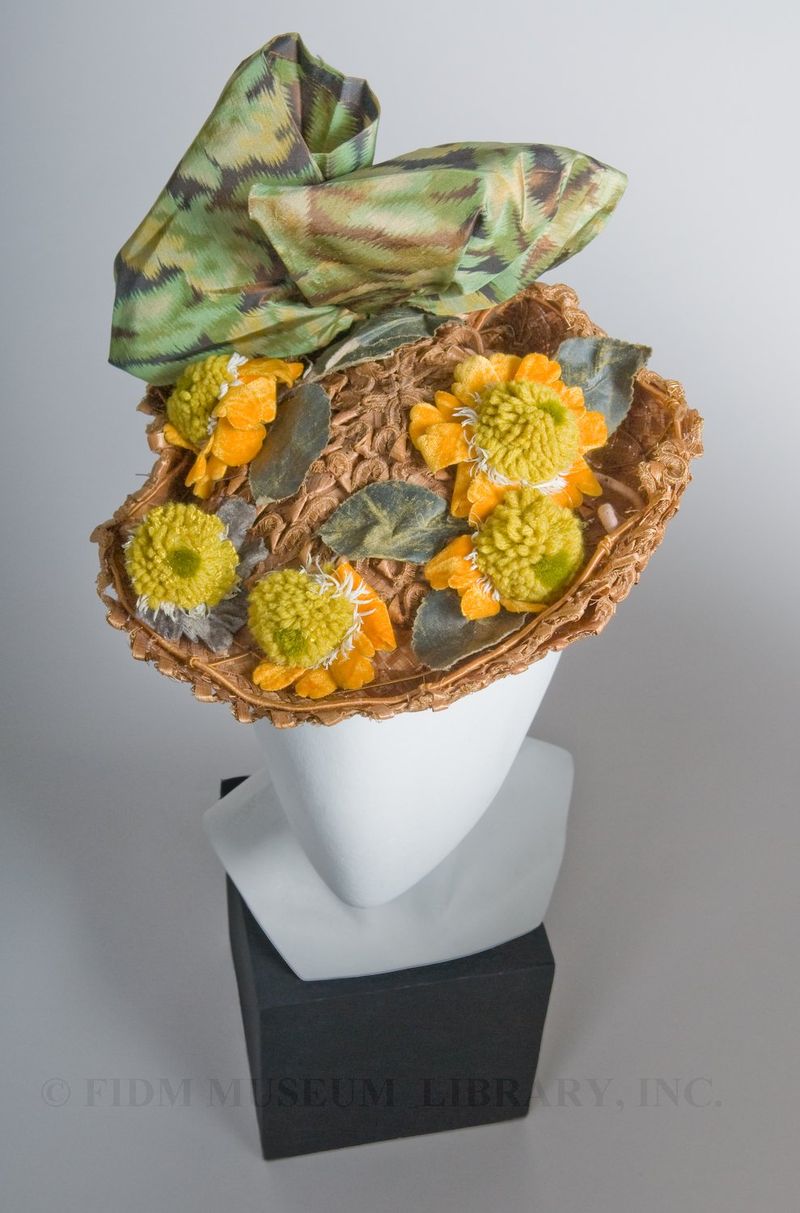

I’m curious as to where the blouse opens. It is clear that if it is a side front opening, it is hidden very well! It looks like it could be hidden in a pleat at center back.
Hi Jade,
The bodice has a center front hook and eye closure. The floral taffeta panel is “puffed” over the hook and eye closures, almost like a false front. If you look at the third image, you can see that the floral taffeta wraps around the neck and closes at the center back.
Hope that answers your question! Let me know if you’d like any additional information.
Thanks for the reply! I reproduced a bodice from a 1896-97 and it used that method to cover the closure too. This one just looked like it might be a bit more complicated.